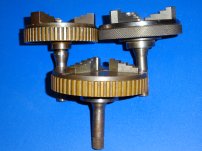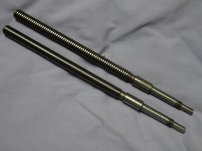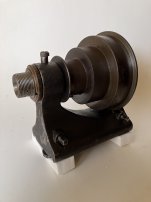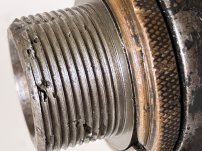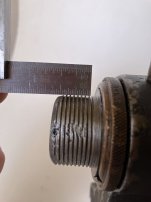Nate Crouch
Plastic
- Joined
- Nov 10, 2023
I'm looking for any advice acquiring tooling for a S&C headstock with "Square" threads. In going thru older books I came across that name and its classifications, but I'm not sure if that's correct. My goal is to get the lathe a # 5 to at least a usable state for general precise work but not any type of professional daily use. The only part for the headstock that came with the machine is a face plate. I assume acquiring a chuck that would screw on, and in a decent condition could be next to impossible? Would making a adapter be a good option? It doesn't seem wise to set up a modern chuck to hold in a collet? any workable solutions would be very much appreciated


